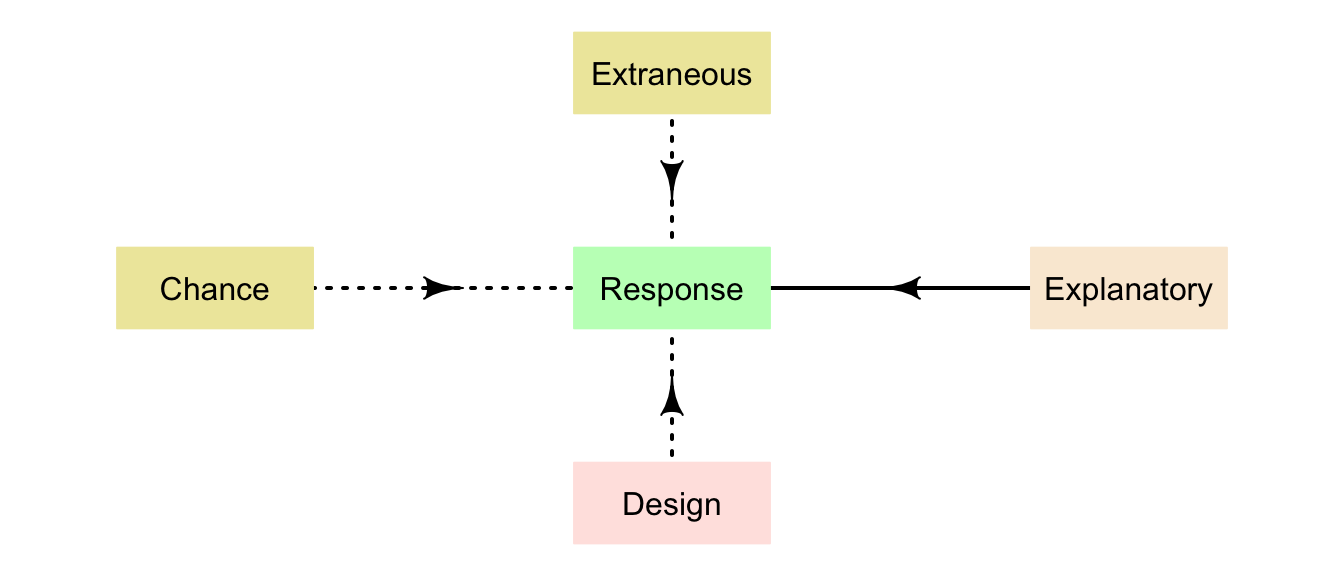6.1 Introduction

Consider the letter-typing RQ again (from Example 5.4), where this RQ was posed:
For students in this course this semester, is the average number of letters typed on a keyboard in 10 seconds the same for females and males?
For this study:
- P: Students in this course this semester.
- O: Average number of letters typed in 10 seconds (say, ‘typing speed’).
- C: Between females and males.
- I: None. (The values of C cannot be allocated to students).
After measuring the typing speed (the response variable) of many individuals, a lot of variation will be observed in the values collected: Every student in the study is likely to have a different typing speed.
The measured typing speeds can be influenced by many issues (Fig. 6.1):
- The explanatory variable (Sect. 6.2): The values of the explanatory variable may influence the values of the response variable; of course, they may not either. The purpose of the study is to find out… In this example, the explanatory variable is the sex of the student.
- Other variables (Sect. 6.3): Other variables that aren’t the focus of the study may influence the response variable, such as ‘age’ or ‘whether or not the person wears glasses.’ We can work with these other variables if we are careful.
- Design issues (Sect. 6.4): The way in which the study is designed can also influence the values of the response variable. These can mean disaster if not handled properly.
- Chance, or randomness (Sect. 6.5): Even the same person doing the same thing repeatedly will not record exactly the same reaction time every attempt. This influence is unavoidable, but we can live with it if we have some idea of the how large this variation is.
![]()
An internally-valid study is one where the association between the outcome and the comparison/connection can be attributed to that comparison/connection, rather than to other factors.
That is, an internally-valid study is one where the impacts of other possible explanations for that association (such as extraneous variables, design issues, and chance) have been accounted for, minimised, or are well-managed.
This is hugely important, and is the main focus of Chaps. 7 (experimental studies) and 8 (observational studies).

FIGURE 6.1: What may influence the values of the response variable